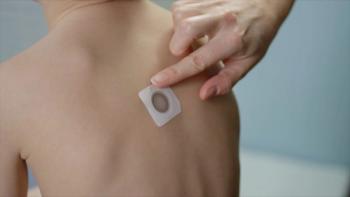
Jonathan Flyer, MD, outlines strategies to boost pediatric lipid screenings
Jonathan Flyer, MD, highlights strategies to improve universal pediatric lipid screening and early detection of familial hypercholesterolemia in children.
As Jonathan Flyer, MD,
Flyer, associate professor of pediatrics at the University of Vermont in Burlington and division chief of pediatric cardiology at the University of Vermont Health Network, discussed the initiative’s rationale and recommendations.
“You’re looking for familial hypercholesterolemia. This is a genetic condition. This is life-threatening,” he said. He noted that early identification—particularly of children with homozygous variants—can be lifesaving and also triggers reverse cascade screening for siblings, parents, and extended family members. “That’s going to reduce the risk of cardiovascular disease for children and then for their families,” he added.
Because prevention is foundational to pediatrics, Flyer said that primary care clinicians need clearer guidance on what to look for and how to act on abnormal results. This includes understanding normal and abnormal lipid values, recognizing gray zones, and becoming more comfortable prescribing first-line statin therapy when appropriate.
“The whole goal of great pediatric care is to prevent illness and disease that happens down the line. We’re upstream health care minds,” Flyer said.
He also highlighted the importance of simplifying workflows. Embedding screening prompts and results into electronic health records can streamline implementation and follow-up.
Health system participation is another priority. Flyer said improving ULS will require incentives, better data sharing, and a stronger communication infrastructure. He added that professional societies will need to support clinicians with ongoing education, resources, and potential licensure incentives.
Improvement science is a core component of the LEAD Pediatric Initiative. Flyer stressed the use of specific, measurable, achievable, relevant, and time-bound (SMART) goals to help teams implement and evaluate real-world changes. “If you make a change in your system, you want to be able to measure it to know, 'Did that make a difference? Better or worse?'” he said.
Flyer noted that the initiative generated a mix of ambitious and pragmatic solutions but shared a unifying philosophy: identify barriers, develop strategies to overcome them, and evaluate measurable outcomes. “We talked about big ideas. We talked about small ideas. A lot of great ideas came forward,” he said.
Reference
Flyer JN, Malik S, Hartz J, et al. Accelerating guideline-recommended universal pediatric lipid screening: launch of the LEAD Pediatric Initiative. J Pediatr. Published online September 17, 2025. doi:10.1016/j.jpeds.2025.114804
Newsletter
Access practical, evidence-based guidance to support better care for our youngest patients. Join our email list for the latest clinical updates.







